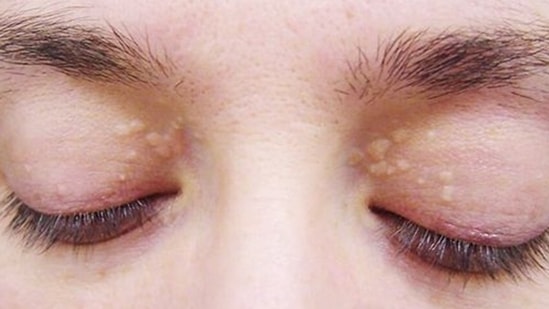Imagine suddenly experiencing double vision without any previous damage or trauma, like Melissa, a 30-year-old teacher who experienced this troubling symptom. A few months ago, she noticed a brief cloudiness in one eye, but dismissed it as fatigue from too much screen time. After undergoing basic and additional eye tests, her symptoms indicated multiple sclerosis. A neuro-ophthalmologist confirmed the diagnosis, and Melissa began treatment immediately. (Also read: Can vision cause paranoid thoughts? Research explores how eyes and mental health are linked )

Melissa’s story is extraordinary. Langis Michaud, an optometrist with 30 years of experience, explains in an article for The Conversation that many patients identify underlying conditions through eye-related symptoms. As a professor at the Université de Montréal’s School of Optometry, Michaud emphasizes teaching students to recognize how eye problems can indicate broader health problems and to work closely with healthcare providers to ensure patients receive the right care.
Early diabetes and eye health
It is expected that by 2030 diabetes will affect almost 8% of the population, early screening is very important. Nevertheless, diabetes is often diagnosed 6-13 years after its onset. An eye exam can help detect the disease earlier, as characteristic lesions may appear in the back of the eye before other symptoms appear.

Early diagnosis is critical within five years of diagnosis, 25% of patients with type 1 diabetes and 40% of patients with type 2 diabetes treated with insulin may develop vision-threatening eye lesions. Early identification and regular monitoring can significantly reduce the risk of blindness caused by untreated diabetes.
High blood pressure and cholesterol in the eyes
High blood pressure and high cholesterol often go undetected, but they pose a serious risk of heart disease and stroke. Surprisingly, the eyes can detect early signs of these diseases without invasive procedures. The blood vessels of the eyes are visible, offering a unique window into vascular health.

High blood pressure, often called the “silent killer,” can show signs such as narrowing of the blood vessels or damage to the retina. Similarly, high cholesterol can lead to visible cholesterol deposits in blood vessels known as Hollenhorst plaques, or appear as lipid arcs on the cornea and yellowish spots (xanthelasma) around the eyes. Because symptoms may be mild or progress gradually, many patients mistake them for normal changes. Regular eye exams can help detect these problems early and trigger timely intervention.
Glaucoma: the silent thief of vision
Glaucoma, a silent disease of the optic nerve, often has no symptoms. It is usually caused by high eye pressure due to excess aqueous humor or drainage problems, leading to gradual loss of nerve fibers and narrowing of the field of vision. By the time vision loss becomes noticeable, significant nerve damage can occur, often irreparably. Chronic glaucoma can be the result of eye problems or medications such as cortisone.

Normotensive glaucoma, however, occurs when the eye pressure is normal and is associated with low blood pressure or conditions such as sleep apnea. Patients with this type need a thorough medical examination to identify the underlying cause.
How can cancer be detected during an eye examination
Cancer, often called the disease of the eyelid because of its prevalence, can also affect the eyes, such as retinoblastoma, and can spread to other organs, such as the lungs and liver. Many cancers, including eye cancers, develop without symptoms, so early detection is critical to survival.
Some retinal pigment abnormalities, such as a bear’s paw, may be associated with colon cancer, which has a poor prognosis if left untreated. Visual field tests can detect problems that patients may not notice or think are minor, but may indicate serious conditions, such as brain tumors or nerve compression.
Symptoms such as abnormal eye movements, irregular pupillary responses, sudden difficulty reading, or diplopia are red flags that require a thorough eye exam and neurological examination. The eyes serve as a window into your overall health, making regular visits to the eye doctor essential, even without symptoms, for early detection and treatment of potential health problems.
Disclaimer: This article is for informational purposes only and is not a substitute for professional medical advice. Always consult your doctor for any health concerns.










